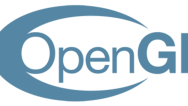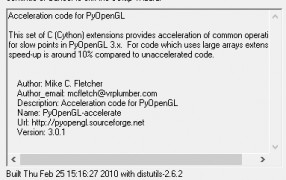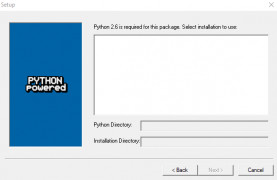
PyOpenGL
by Mike C. Fletcher
PyOpenGL is a cross-platform library providing Python bindings to the modern OpenGL API.
Operating system: Windows
Publisher: Mike C. Fletcher
Release : PyOpenGL 3.0.1
Antivirus check: passed
Introduction
PyOpenGL is an open source Python library that provides access to the OpenGL (Open Graphics Library) API. It is a powerful library that allows programmers to create high-performance graphics applications. It supports the most recent versions of OpenGL, and provides an extensive set of features including:
• Ability to create 3D graphics using geometric primitives (points, lines and polygons)
• Support for shaders, textures, lights and materials
• Support for advanced rendering techniques such as deferred shading and shadow mapping
• Support for a variety of data formats including OBJ, STL and X3D
• Ability to create sophisticated user interfaces with support for mouse, keyboard and joystick input
• Ability to create interactive applications with support for animation, physics and audio
• Support for multiple platforms including Windows, Mac OS X and Linux
• Comprehensive documentation and sample code for learning and developing with PyOpenGL
• Open source, free of charge and available for commercial use
Conclusion
PyOpenGL is an open source Python library that provides access to the OpenGL API. It is a powerful library that allows programmers to create high-performance graphics applications. It supports the most recent versions of OpenGL, and provides an extensive set of features including support for shaders, textures, lights and materials, as well as support for a variety of data formats. PyOpenGL also supports multiple platforms, and is free of charge and available for commercial use.
PyOpenGL is an open source Python library that provides access to the OpenGL (Open Graphics Library) API. It is a powerful library that allows programmers to create high-performance graphics applications. It supports the most recent versions of OpenGL, and provides an extensive set of features including:
PyOpenGL provides an easy-to-use interface for manipulating and displaying 3D graphics.Features:
• Ability to create 3D graphics using geometric primitives (points, lines and polygons)
• Support for shaders, textures, lights and materials
• Support for advanced rendering techniques such as deferred shading and shadow mapping
• Support for a variety of data formats including OBJ, STL and X3D
• Ability to create sophisticated user interfaces with support for mouse, keyboard and joystick input
• Ability to create interactive applications with support for animation, physics and audio
• Support for multiple platforms including Windows, Mac OS X and Linux
• Comprehensive documentation and sample code for learning and developing with PyOpenGL
• Open source, free of charge and available for commercial use
Conclusion
PyOpenGL is an open source Python library that provides access to the OpenGL API. It is a powerful library that allows programmers to create high-performance graphics applications. It supports the most recent versions of OpenGL, and provides an extensive set of features including support for shaders, textures, lights and materials, as well as support for a variety of data formats. PyOpenGL also supports multiple platforms, and is free of charge and available for commercial use.
The Python language must be installed on the system in order to use PyOpenGL. The Python OpenGL library requires Python 2.7 or Python 3.3 or later, as well as the numpy package. The PyOpenGL library also requires OpenGL 3.3 or later, as well as the GLUT or FreeGLUT library. Additionally, a number of other packages may be required depending on the operating system, including GLU, GLX, and GLE.
PROS
Supports various types of graphics like 2D, 3D, and interactive graphics.
Provides a simple and intuitive programming interface.
Comprehensively compatible with numerous operating systems.
Provides a simple and intuitive programming interface.
Comprehensively compatible with numerous operating systems.
CONS
Lacks comprehensive documentation for effective use.
Can be difficult to install on some platforms.
Requires a strong understanding of OpenGL concepts.
Can be difficult to install on some platforms.
Requires a strong understanding of OpenGL concepts.
Max F********y
PyOpenGL is an excellent software tool for 3D graphics programming. I used it to write a 3D game engine and it worked extremely well. It was very easy to install and use, and it was comprehensive enough to meet all of my needs. The documentation was clear and comprehensive, and the tutorials were extremely helpful. The support forum was also very active, which was great for finding answers to any questions I had. Overall, I was very pleased with the results I got from PyOpenGL.
Jack Y*****n
PyOpenGL is a powerful library for creating 3D graphics in Python. It is well documented and has great support. I found it easy to use and it worked well with the other packages I was using. Working with shaders was straightforward and its performance was good.
Kian O*******r
PyOpenGL is an open-source Python library that provides bindings for OpenGL API. It allows Python programmers to create and manipulate 3D graphics and animations, as well as interact with other computer graphics software. PyOpenGL supports a wide range of OpenGL features, including lighting, texturing, and model transformation. It also provides access to GLSL, the OpenGL Shading Language, and supports multiple platforms, including Windows, Mac, and Linux. Overall, PyOpenGL is a powerful tool for creating interactive, high-performance graphics applications in Python.
Samuel Wolfmeyer
PyOpenGL is a Python library that provides a convenient interface for working with OpenGL graphics, allowing for easy integration of 3D graphics into Python applications.
Alfie
Efficient, flexible but requires substantial programming knowledge.
Joseph
Performant and versatile graphic creation.
Mason
Great tool for 3D graphics and visualizations.


